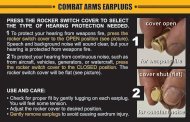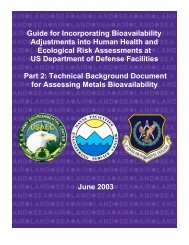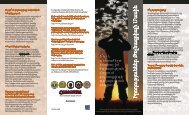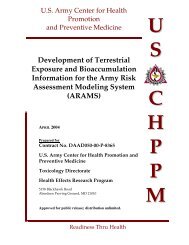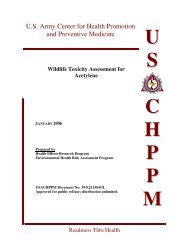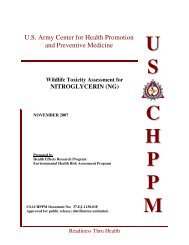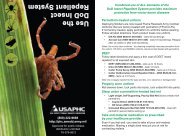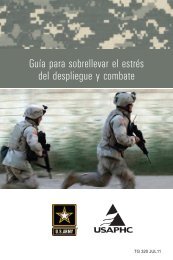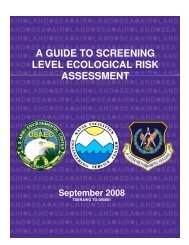Phenanthrene - U.S. Army Public Health Command
Phenanthrene - U.S. Army Public Health Command
Phenanthrene - U.S. Army Public Health Command
You also want an ePaper? Increase the reach of your titles
YUMPU automatically turns print PDFs into web optimized ePapers that Google loves.
WILDLIFE TOXICITY ASSESSMENT FOR PHENANTHRENEDepartment of the <strong>Army</strong>U.S. <strong>Army</strong> Center for <strong>Health</strong> Promotion and Preventive MedicineWildlife Toxicity Assessment for <strong>Phenanthrene</strong>CAS No. 85-01-8 January 20061. Introduction<strong>Phenanthrene</strong> is one of more than 200 structurally related polycyclic aromatic hydrocarbons (PAHs)that are produced during the incomplete combustion of organic matter (HSDB 2001). The compoundshave been detected in tobacco smoke, automobile exhausts, barbecued meat, garbage incineration, andwood burning. Along with other PAHs, phenanthrene has also been detected in used motor oils, crudeoils and lubricating fluids. According to IARC (1983), and the ATSDR (1995), phenanthrene has beenidentified in ambient air, surface and drinking water, and in foods, all of which could serve as sources ofphenanthrene for wildlife. Although the compound is not produced commercially in the United States,the Agency for Toxic Substances and Disease Registry (ATSDR) reports that a small amount of purifiedphenanthrene is imported, for use in the manufacture of explosives, pesticides, drugs, the chemicalphenanthrene-quinone, and some dyes, and in research (ATSDR 1995).This Wildlife Toxicity Assessment summarizes the current knowledge of the toxicological impacts ofphenanthrene on wildlife. Evaluating the toxicity of phenanthrene is intended to contribute to thederivation of toxicity reference values (TRVs) that could serve as screening-level benchmarks for wildlifein the vicinity of contaminated sites. The protocol for the development of this assessment is documentedin the U.S. <strong>Army</strong> Center for <strong>Health</strong> Promotion and Preventive Medicine Technical Guide 254, StandardPractice for Wildlife Toxicity Reference Values (USACHPPM 2000). TRVs are not here derived forphenanthrene at this time, due mainly to a paucity of relevant data. This summary should neverthelesscontribute to the overall risk management process by helping to identify the most critical research needs.2. Toxicity Profile2.1 Literature ReviewRelevant biomedical, toxicological, and ecological databases were electronically searched April 20,2001, using Dialog to identify primary reports of studies and reviews on the toxicology of phenanthrene.Separate searches were carried out linking the compound to laboratory mammals, birds, reptiles andamphibians (combined), or wild mammals and birds. In general, a two-tiered approach was used in whichall citations were first evaluated as titles and “key words in context.” All available abstracts of thosePage 5 of 14



